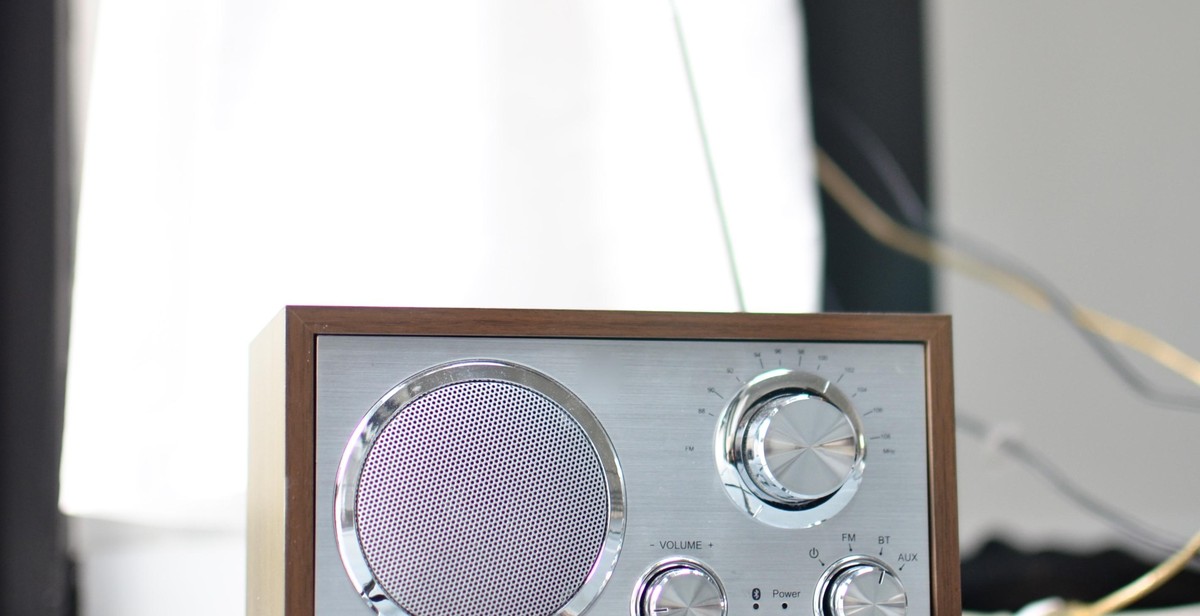How to Install Outdoor Sound System for Entertaining Spaces
Outdoor entertaining spaces are becoming increasingly popular among homeowners. Whether it’s for hosting parties, family gatherings, or simply enjoying some quiet time outside, having a good sound system can enhance the overall experience. However, installing an outdoor sound system can be a daunting task for those who are not familiar with the process. This article provides a comprehensive guide on how to install an outdoor sound system that will deliver quality sound for all your outdoor events.
Choosing the Right Sound System
The first step in installing an outdoor sound system is to choose the right equipment. When selecting a sound system, it’s important to consider the size of your outdoor space, the type of music you will be playing, and your budget. A good outdoor sound system should be weather-resistant and have a high-quality sound output.
Location and Wiring
The next step is to determine the location where you will install the sound system. It’s important to choose a location that is near a power source and where the speakers will be able to project sound evenly throughout the space. Once you have determined the location, you will need to run wiring from the sound system to the speakers.
Speaker Placement
Proper speaker placement is crucial to achieving optimal sound quality. The speakers should be placed at a height that is level with the listener’s ear. In addition, the speakers should be positioned in a way that allows sound to be projected evenly throughout the space.
Conclusion
Installing an outdoor sound system can be a great addition to your outdoor entertaining space. By following these simple steps, you can ensure that your sound system delivers high-quality sound for all your outdoor events.

Step 1: Planning
Before you start installing your outdoor sound system, proper planning is essential to ensure that you have the right equipment and setup to meet your entertainment needs. Here are the three key factors to consider:
Determine the Space to Cover
The first step in planning your outdoor sound system is to determine the area you want to cover. Consider the size and layout of your outdoor space, including any obstacles, such as trees or buildings, that may affect the sound quality. You’ll want to choose speakers that are appropriate for the size of your space and can deliver clear sound throughout the area.
Choose the Type of Speakers
When selecting speakers for your outdoor sound system, there are several factors to consider. First, decide whether you want wired or wireless speakers. Wired speakers tend to offer better sound quality, but they require running wires through your yard or patio. Wireless speakers are easier to install, but may not provide the same level of sound quality as wired speakers.
Next, consider the type of speakers you want. Outdoor speakers come in various shapes and sizes, including landscape speakers, rock speakers, and wall-mounted speakers. Landscape speakers are designed to blend in with your yard, while rock speakers are designed to look like natural rocks. Wall-mounted speakers are ideal for covered patios or decks.
Decide on the Wiring and Power Source
Once you’ve chosen your speakers, you’ll need to decide on the wiring and power source. If you’re using wired speakers, you’ll need to run wires from your amplifier or receiver to each speaker location. Be sure to bury the wires at least six inches underground to protect them from weather and pests.
If you’re using wireless speakers, you’ll need to ensure that they are compatible with your Wi-Fi network. You’ll also need to ensure that you have a strong Wi-Fi signal in your outdoor space.
For the power source, you’ll need to decide between plugging your speakers into an electrical outlet or using a battery-powered system. Electrical outlets are more reliable, but may require an electrician to install. Battery-powered systems are more portable, but may require frequent battery changes.

Step 2: Speaker Placement
One of the most important factors in setting up an outdoor sound system is speaker placement. Proper speaker placement can make the difference between a good sound system and a great one. Here are some tips to help you position your speakers for optimal sound quality:
Consider the Acoustics
Before you start positioning your speakers, it’s important to consider the acoustics of your outdoor space. Acoustics refer to the way sound behaves in a particular environment. Outdoor spaces can be challenging because sound can easily bounce off surfaces like walls, trees, and even the ground, which can create echoes and distort the sound quality.
To minimize these issues, consider the layout of your outdoor space. Look for areas where sound can bounce off surfaces and try to position your speakers away from these areas. You can also use landscaping features like bushes or tall plants to help absorb some of the sound and prevent it from bouncing around too much.
Positioning Speakers for Optimal Sound Quality
Once you’ve considered the acoustics of your outdoor space, it’s time to position your speakers. Here are some tips to help you get the best sound quality:
- Position your speakers at ear level: For the best sound quality, position your speakers at ear level. This will help direct the sound towards your ears, rather than towards the ground or sky.
- Angle your speakers: Angle your speakers towards your listening area to help direct the sound where you want it.
- Separate your speakers: Position your speakers at least 6 feet apart to create a wider soundstage and prevent the sound from being too concentrated in one area.
- Avoid placing speakers too close to walls or corners: Placing speakers too close to walls or corners can create echoes and distort the sound quality. Instead, position your speakers at least a foot or two away from any walls or corners.
By following these tips, you can position your speakers for optimal sound quality and enjoy high-quality outdoor audio in your entertaining space.

Step 3: Wiring and Connections
Once you have selected the right outdoor sound system and found the perfect spot to install it, it is time to wire and connect the various components of the system. The wiring process involves connecting the speakers to the amplifier and the amplifier to the sound source.
Connect the Speakers to the Amplifier
First, you need to identify the positive and negative terminals on both the speakers and the amplifier. Most speakers have two terminals, one red and one black, while amplifiers usually have red and black binding posts or spring clips. Connect the positive terminal of each speaker to the positive terminal on the amplifier and the negative terminal of each speaker to the negative terminal on the amplifier.
It is essential to ensure that the wires are securely fastened and the connections are tight to prevent any loose connections that can cause sound distortion or damage to the system. You can use banana plugs, spade connectors, or bare wire connections to attach the wires to the terminals.
Pro Tip:
- Label the wires as you connect them to the terminals to avoid confusion and make it easier to troubleshoot any issues that may arise later.
- Ensure that the wiring is done correctly, especially if you are using a multi-channel amplifier, to avoid any phase issues or mismatched impedances.
Connect the Amplifier to the Sound Source
After connecting the speakers to the amplifier, the next step is to connect the amplifier to the sound source. The sound source can be a smartphone, tablet, laptop, or any other audio device that can connect to the amplifier.
You can use a wired or wireless connection to link the amplifier and the sound source. For a wired connection, use an RCA cable or a 3.5mm audio cable to connect the audio output of the sound source to the audio input of the amplifier. For a wireless connection, use Bluetooth, Wi-Fi, or any other wireless technology that the amplifier and the sound source support.
Pro Tip:
- If you are using a wired connection, ensure that the cable is long enough to reach the amplifier from the sound source without stretching or pulling on the cable.
- If you are using a wireless connection, ensure that the amplifier and the sound source are within range and that there are no obstructions that can interfere with the signal.
Once you have connected the amplifier to the sound source, turn on the system and test it to ensure that everything is working correctly. Adjust the volume and other settings to your liking, and enjoy your new outdoor sound system.

Step 4: Testing and Adjusting
After installing your outdoor sound system, the next step is to test and adjust the sound quality to ensure that you get the best listening experience possible. Here are some tips on how to test and adjust your outdoor sound system:
Test the System
The first thing you need to do is test the system to ensure that all the components are working correctly. Start by playing some music or sound effects through the speakers and check if there are any issues with the sound quality. If you notice any distortion, crackling, or other issues, you may need to troubleshoot the system to identify the problem.
You can also test the system by walking around your outdoor space and checking if the sound is consistent in all areas. If you notice any dead zones or areas where the sound quality is poor, you may need to adjust the placement of the speakers or add additional speakers to improve the coverage.
Adjust the Sound Quality
Once you have confirmed that the system is working correctly, the next step is to adjust the sound quality to suit your preferences. Here are some tips on how to do this:
- Start by adjusting the volume to a comfortable level. The volume should be loud enough to hear the music clearly but not so loud that it disturbs your neighbors.
- Next, adjust the bass and treble levels to your liking. If you prefer a bass-heavy sound, increase the bass levels. If you prefer a brighter sound, increase the treble levels.
- Consider using an equalizer to fine-tune the sound quality. An equalizer allows you to adjust the frequency response of the sound system to create a more balanced and natural sound.
- If you are using a multi-zone sound system, adjust the volume and sound quality for each zone separately to ensure that you get the best listening experience in each area.
Remember to test the sound quality regularly and make adjustments as necessary. Changes in weather or other environmental factors can affect the sound quality, so it’s essential to monitor the system and make adjustments as needed.
| Tip: | Consider hiring a professional to help you test and adjust your outdoor sound system. A professional can provide expert advice on the best placement of speakers, the ideal sound quality, and other factors that can affect the listening experience. |
|---|

Conclusion
Installing an outdoor sound system can be a game-changer for your entertaining spaces. It not only enhances the overall ambiance but also adds a touch of sophistication to your gatherings.
When installing an outdoor sound system, it is essential to consider the size of the space, the type of speakers, and the quality of the sound. You also need to ensure that the system is weather-resistant and can withstand the elements.
Before installing the system, it is crucial to plan the layout and wiring to avoid any potential hazards or damage. You also need to check the local noise ordinances to avoid any complaints from neighbors.
Overall, a well-designed and installed outdoor sound system can take your entertaining spaces to the next level. With the right equipment and a professional installation, you can enjoy high-quality sound and create a memorable experience for your guests.
Key takeaways
- Consider the size of the space, type of speakers, and quality of sound when choosing an outdoor sound system.
- Ensure that the system is weather-resistant and can withstand the elements.
- Plan the layout and wiring to avoid any potential hazards or damage.
- Check the local noise ordinances to avoid any complaints from neighbors.
- A well-designed and installed outdoor sound system can enhance the overall ambiance of your entertaining spaces and create a memorable experience for your guests.
